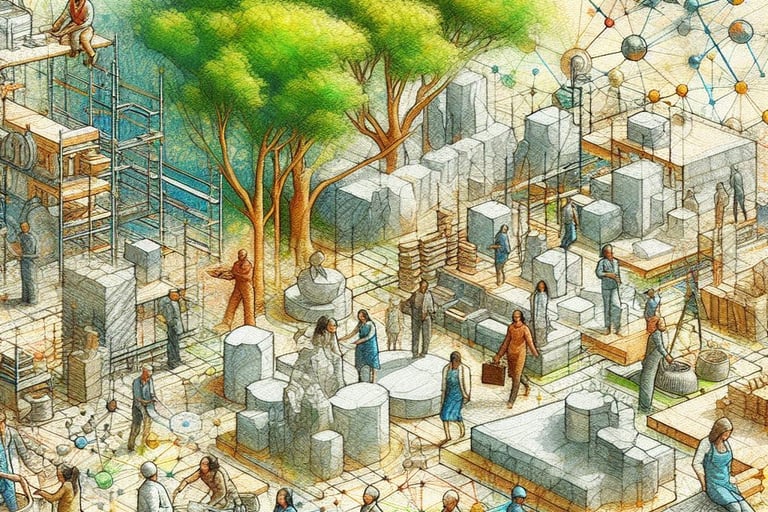Fostering innovation at the interface of materials, construction and sustainability to reshape the built environment
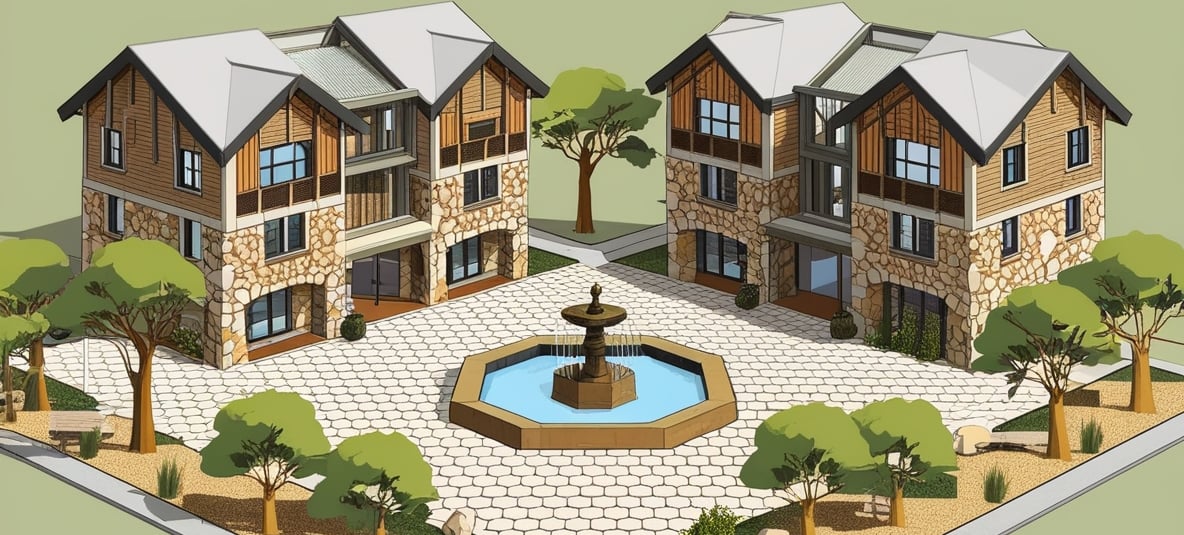



A joint initiative



At the Intersection of Materials Science and Sustainable Construction
Golondrina Studios, an initiative of Materialeyes and Tonbo Ventures, is a cross-border innovation hub dedicated to transforming the $400B sustainable construction materials market. Drawing on millenia of wisdom reinvigorated with 21st century tools, we recognize that the solution to today's housing crisis and construction-related emissions isn't a moonshot—it's a $1.6 trillion opportunity hidden in plain sight. By leveraging deep materials science expertise from the molecular to the architectural scale, we're cultivating market-ready ventures that bridge the gap between cutting-edge sustainable materials and commercial implementation. Our studio model accelerates go-to-market timelines through pre-negotiated partnerships with regulators, research institutions, and industry leaders, dramatically reducing the barriers that typically slow construction innovation.
Designed for Strategic Investors Seeking Sustainable Returns
For the construction sector and venture capital partners, Golondrina Studios offers a curated pipeline of de-risked, high-potential ventures at the intersection of sustainability, materials innovation, and construction technology. Our portfolio companies benefit from our extensive technical expertise, regulatory navigation capabilities, and access to demonstration sites—addressing the traditional pain points of bringing new materials to market. With projected returns of 15%+ annual ROI and a focus on ventures with quantifiable emission reductions and circular economy impacts, we're creating a new generation of construction materials companies ready for strategic acquisition or independent scaling. Join us in reimagining built environments that work with nature, not against it.
The Challenge
The construction sector is at a crossroads. Today, it faces critical challenges:
🌍 30% of global resource extraction feeds construction.
Environmental Impact: Responsible for 35-50% of global GHG emissions and 1B+ tons of waste annually.
Concrete Dependency: Traditional materials like OPC concrete contribute 8% of global emissions.
Housing Shortages: Rising demand for resilient infrastructure amid natural disasters and urbanization.
Economic Pressures: Complex supply chains, compliance costs, and slow adoption of sustainable alternatives.
The industry needs bold solutions—fast.
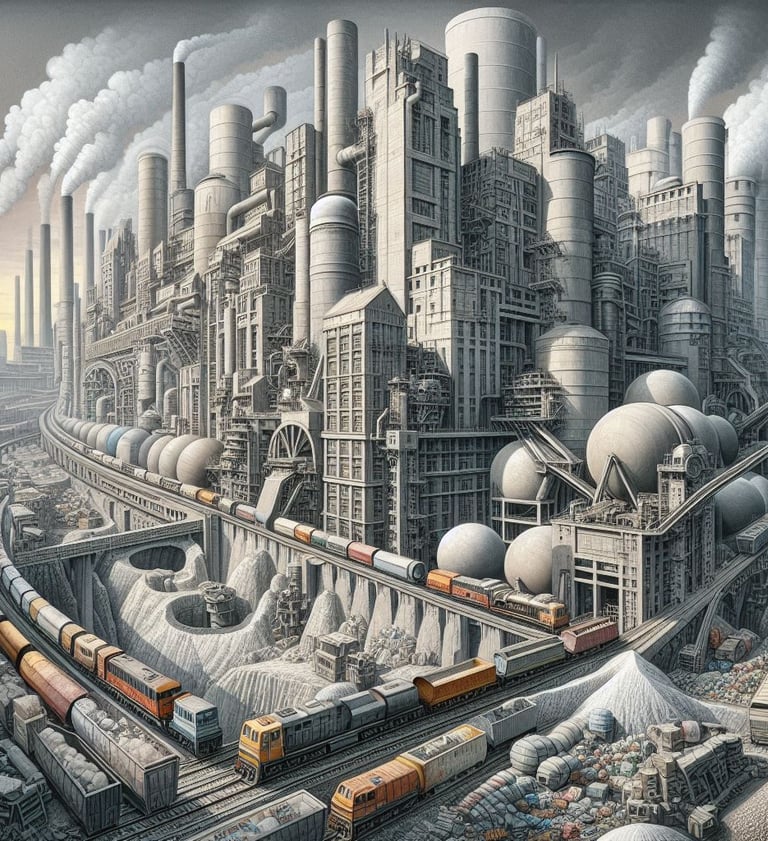



Silo thinking and barriers to entry
The construction industry operates in deeply entrenched silos—architects, engineers, material scientists, policymakers, and financiers often work in isolation, creating fragmented solutions that fail to address systemic sustainability challenges. This disconnect perpetuates inefficiencies: buildings account for 37% of global CO2 emissions despite available decarbonization technologies.
Breaking these silos demands cross-disciplinary systems thinking—a methodology that aligns material innovation with circular supply chains, embeds climate resilience into urban policy, and ties financial models to long-term environmental KPIs. By integrating disciplines like bio-based material science, AI-driven logistics, and ESG-aligned investment frameworks, the sector can achieve symbiotic outcomes:
45% reduction in embodied carbon through circular material flows (Ellen MacArthur Foundation, 2023)
20–30% cost savings via predictive maintenance and digital twin integration (McKinsey, 2022)
5x faster scaling of net-zero solutions through policy-industry co-design (World GBC, 2023)
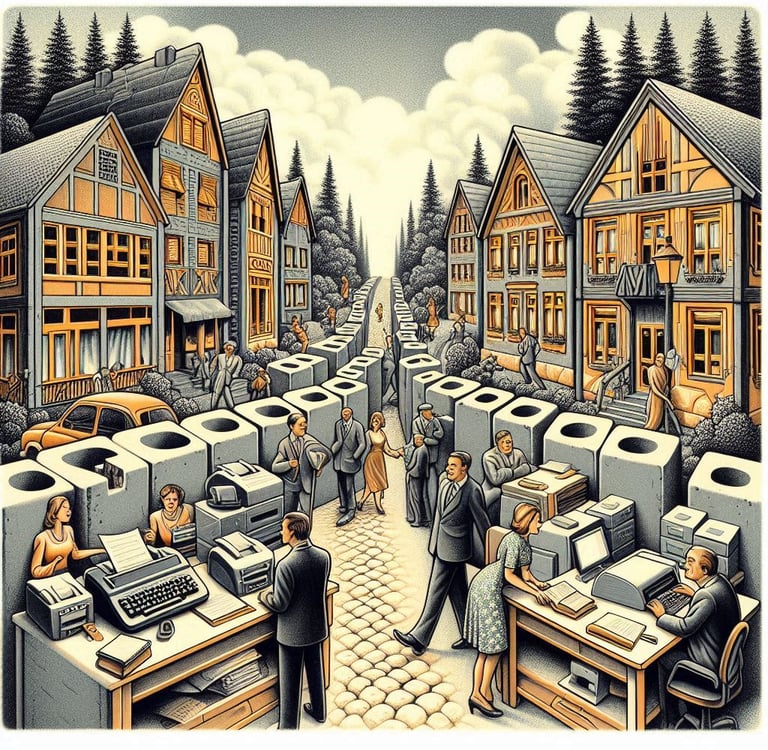

The built environment’s transition to sustainability faces systemic barriers rooted in market conservatism and regulatory complexity. Traditional materials like OPC-based concrete—responsible for 8% of global CO2 emissions—remain entrenched due to risk-averse procurement practices, despite proven alternatives such as low-carbon concrete and bio-based composites. Meanwhile, regulatory frameworks often lag behind innovation: approval processes for novel materials can take 18–24 months in regions like the EU, stifling adoption of solutions that could cut embodied carbon by 30–40% (World GBC, 2023)
Key Barriers to Innovation:
Market Inertia: Over 70% of construction firms prioritize cost over sustainability, delaying adoption of scalable decarbonization technologies (McKinsey, 2022).
Fragmented Standards: Divergent building codes across jurisdictions create compliance bottlenecks, increasing time-to-market by 40% for cross-border projects (EU Commission, 2023).
Financing Gaps: Only 12% of green construction projects secure sufficient funding due to misaligned investor risk perceptions (Climate Bonds Initiative, 2023).
There is growing awareness to the need for streamlined regulatory acceptance and harmonized sustainability benchmarks. Digital tools and AI driven platforms offer chances to automate permitting processes while growing public-private coalitions support R&D and de-risk pilot scale deployments
At Golondrina, we help innovators overcome and dismantle these barriers through:
Regulatory Navigation: Partnering with certification bodies to pre-validate materials.
Market Access Programs: Connecting innovators with pilot-ready developers and ESG-aligned capital.
UNEP (2023): Global Status Report for Buildings and Construction
Ellen MacArthur Foundation (2023): Circular Economy in Construction
McKinsey & Company (2022): Digital Twins in Infrastructure
World Green Building Council (2023): Policy Roadmap for Net-Zero Buildings




We've got this
Across the globe, visionary innovators are paving the way for a new era in construction—one that works in harmony with nature, not against it. By transforming the raw elements of the biosphere and lithosphere into sustainable, circular, high-performance materials, they are redefining what it means to build. From carbon-neutral concrete to bio-based composites, the possibilities are not just promising—they are actionable.
The technology is ready. The tools are here. Now is the moment to focus on what truly matters: creating spaces that nurture, inspire, and endure. The places we call home, work, and play can be more than just structures—they can be living ecosystems that enhance our well-being and protect our planet.
This is your opportunity to be part of a movement that’s reshaping the built environment. Whether you’re an entrepreneur with a groundbreaking idea or an innovator ready to scale, the time to act is now. Together, we can turn bold visions into reality and build a future that’s not only sustainable but extraordinary."


The future is here
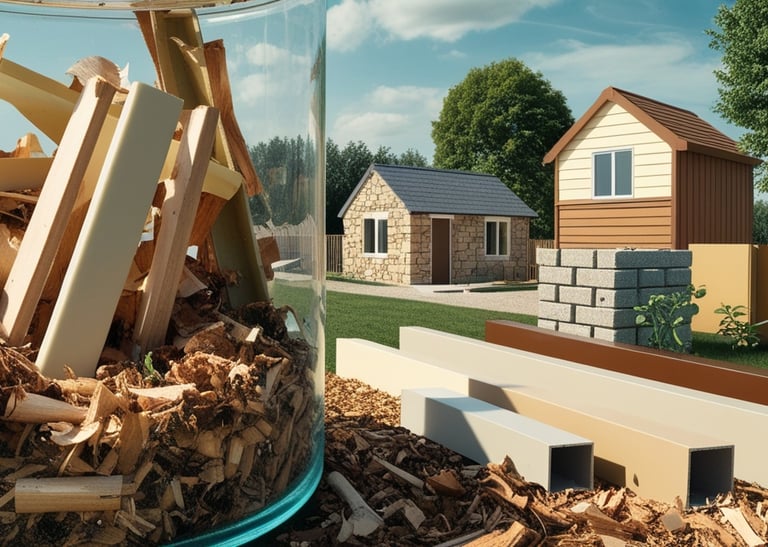

The global sustainable construction market, valued at €515.6 Billion in 2024 ,is expanding at a CAGR of 12.3% and is projected to grow to €916.6 Billion by 2031 [1,2] . This growth is driven by regulatory mandates, technological advancements, and increasing demand for eco-friendly materials and energy-efficient designs. Material innovations such as carbonising cement, bio-based composites and recycled aggregates are quite literally paving the way towards continued growth.
Capital flows and fiscal incentives are accelerating the transition to more sustainable built environments. The European Union alone requires €1.2 trillion annually in green investments until 2030 to meet its climate targets, with €477 billion/year earmarked as additional funding beyond current levels [3]. Governments are deploying mechanisms like tax credits, grants, and green bonds to de-risk private investments, Public-private partnerships now account for 15–20% of sustainable project financing globally. Corporations in construction and real estate sectors are increasingly investing in climate-tech and aligning with ESG frameworks to secure future returns
Decarbonization incentives are reshaping industry dynamics. Carbon markets and certifications like LEED and BREEAM are becoming critical for project viability, with LEED-certified projects increasing by 9% in 2023 15. Companies such as Heidelberg Materials are pioneering net-zero cement solutions, leveraging carbon capture and blockchain-verified accounting to reduce emissions by 10 million metric tons by 2030
[1] Persistence Market Research (2024–2031 forecasts)
[2] ECB Economic Bulletin (EU green investment needs)
[3] Shan, M.; Hwang, B.-G.; Zhu, L. A Global Review of Sustainable Construction Project Financing: Policies, Practices, and Research Efforts. Sustainability 2017, 9, 2347. https://doi.org/10.3390/su9122347
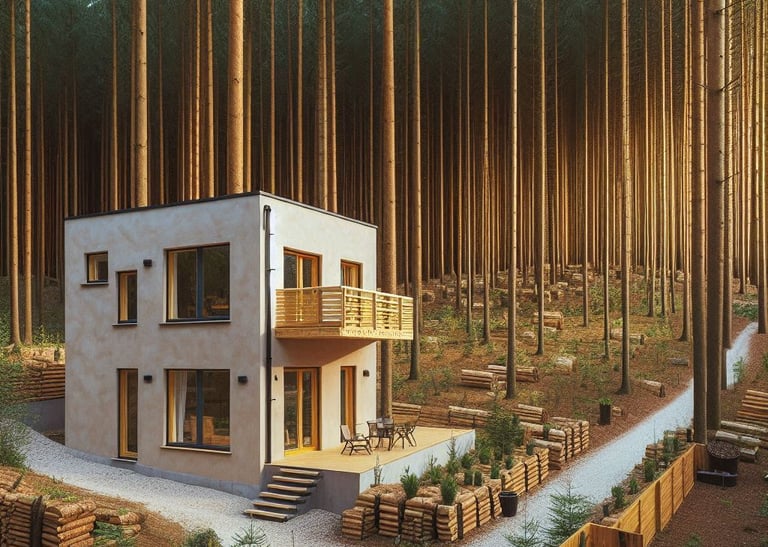

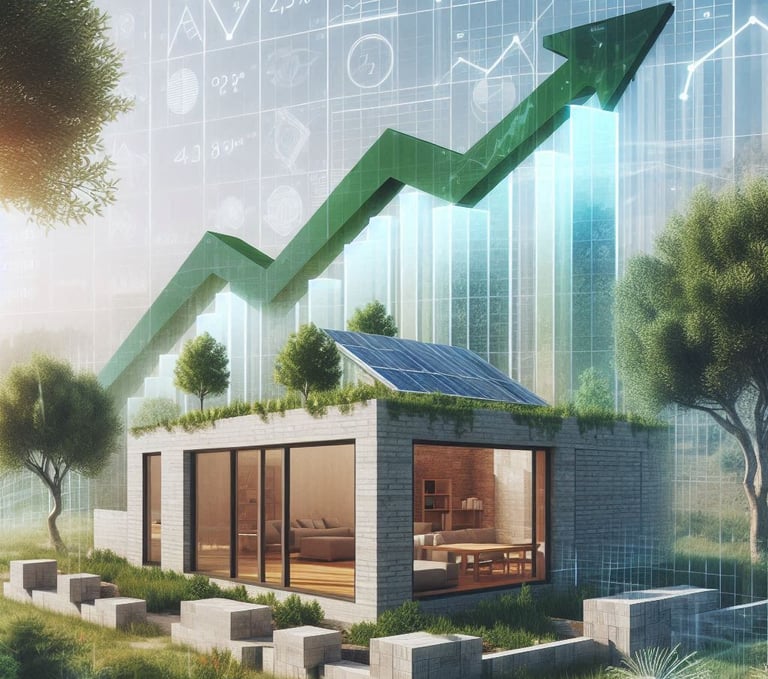



Be Part of the Change
Imagine a world where every beam, brick, and facade actively restores ecosystems—where cities function like forests, sequestering carbon and nurturing life. At Golondrina Studios, we’re not just designing sustainable materials; we’re architecting a self-reinforcing ecosystem where ventures amplify each other’s impact.
We unite materials scientists, circular economy pioneers, and AI innovators to build ventures that share more than a mission—they share resources, data, and breakthroughs. Picture this:
A startup developing mycelium insulation collaborates with another optimizing AI-driven construction waste upcycling, slashing costs and scaling adoption.
A low-carbon concrete venture shares its CO2 mineralization patents with a partner creating carbon-negative precast panels, accelerating both roadmaps.
Shared supply chain networks reduce risks for bio-based material startups, while pooled market intelligence de-risks regulatory hurdles for all.
This isn’t a portfolio—it’s a living network. By curating ventures that solve interconnected challenges, we ensure innovations compound:
✅ Cross-venture R&D: Shared labs for testing materials, from geopolymer binders to recycled polymer composites.
✅ Collective market leverage: Joint pilots with developers committed to net-zero buildings.
✅ Circular resource loops: One venture’s waste stream becomes another’s raw material.
If you’re pioneering the built environments of tomorrow, join a studio where your work multiplies.
Here, breakthroughs aren’t siloed—they’re the foundation of a collaborative engine accelerating market-ready solutions. Let’s build a future where the act of construction heals the planet.
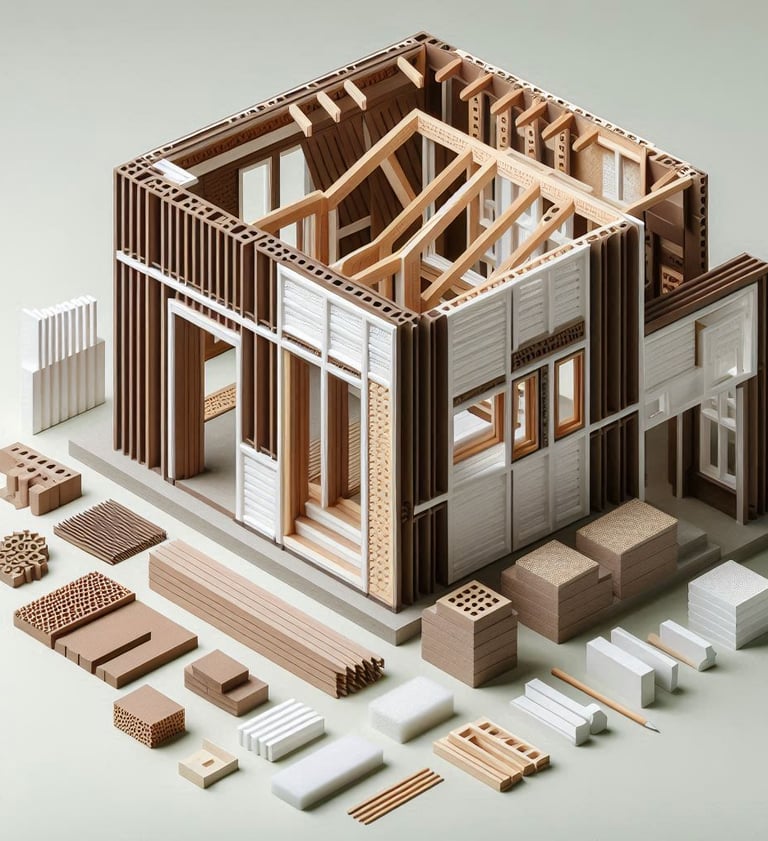



Lets make it happen together:
Creating the built environments and communities of the future is an integrative undertaking, that requires systems thinking and an appreciation of the interconnectedness of natural and human spheres. To create dialogues and meaningful ides, we join the hands of architects, town planner, geologists, environmental custodians, builders, engineers and many others. The barriers to overcome are significant but when we make the right connections, doors will open to great oppotunities to development
Why Collaborate with Us?
Cross-Disciplinary Power: Leverage our network of scientists, engineers, policymakers, and investors to scale your vision.
Resource Acceleration: Access pilot sites, regulatory guidance, and funding to fast-track your solution.
Global Impact: Join a coalition reshaping markets in Iberia, Israel, and beyond—regions leading the charge in sustainable growth.
Who We Seek:
Innovators: Startups and researchers pioneering sustainable materials or construction tech (TRL 4+).
Investors: Visionary capital partners committed to high-impact, de-risked ventures.
Industry Leaders: Forward-thinking firms ready to pilot cutting-edge solutions and co-create standards.
The time for incremental change is over. Let’s build boldly—and leave a legacy of spaces that inspire, endure, and give back to the Earth.
